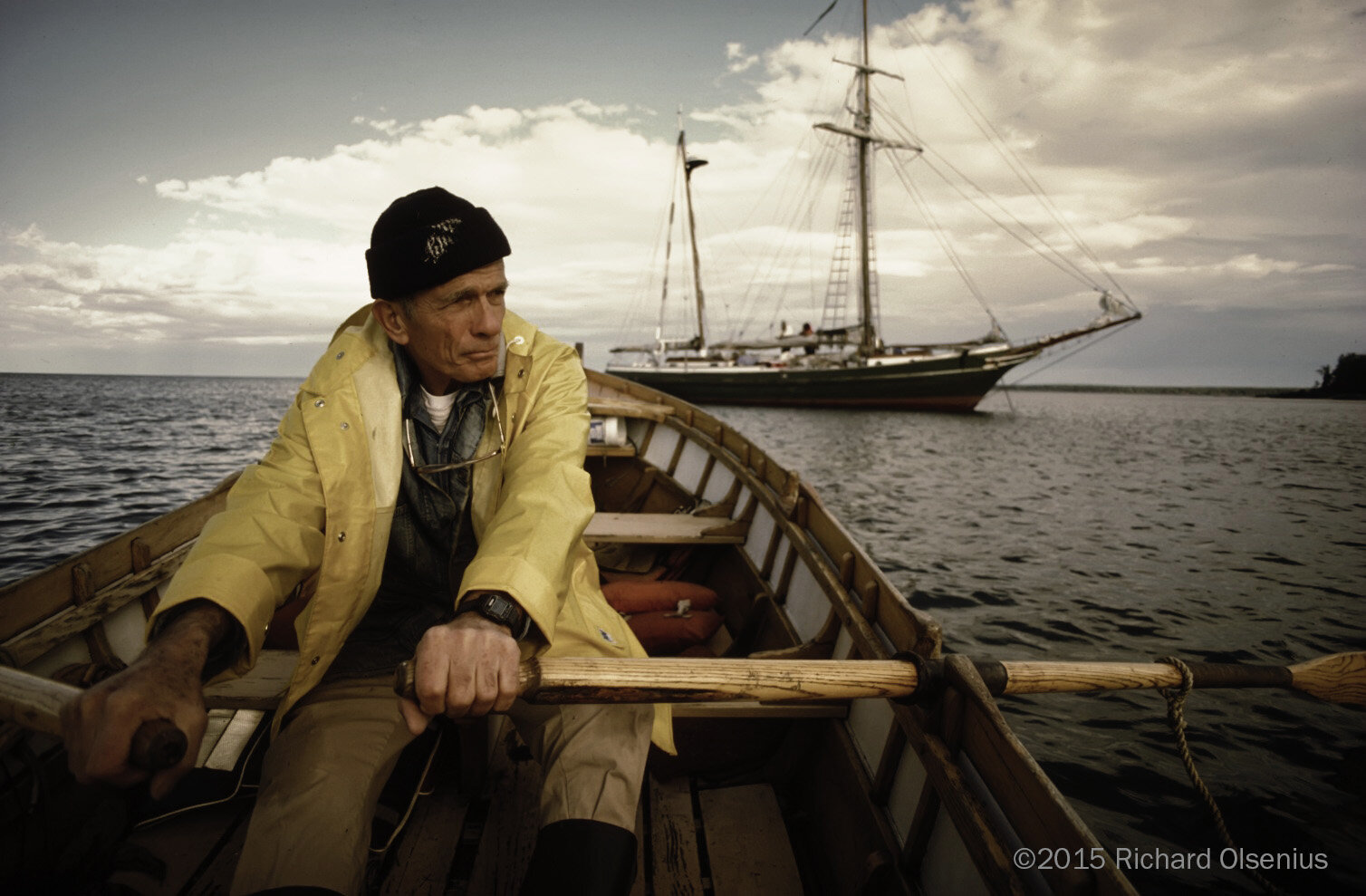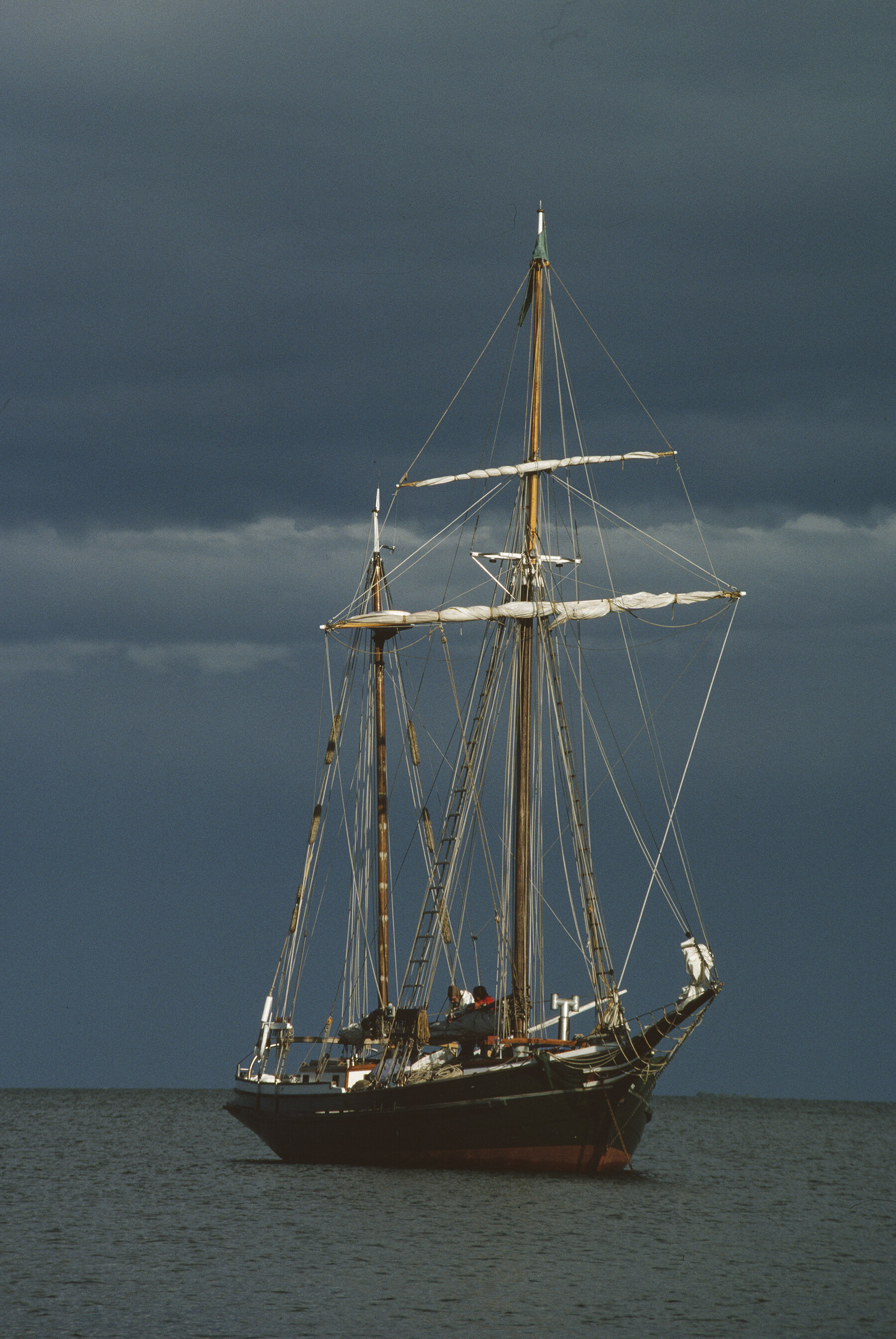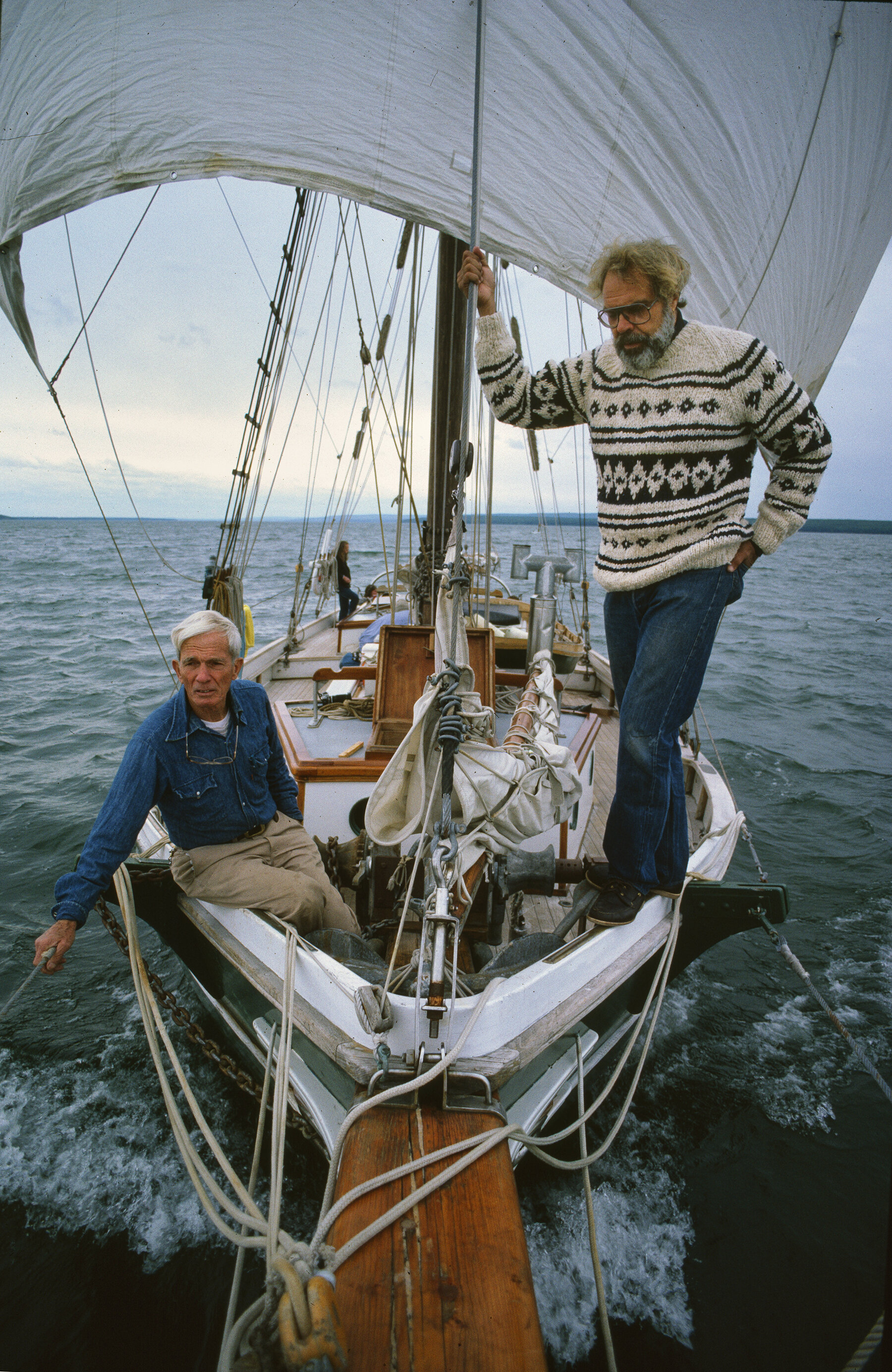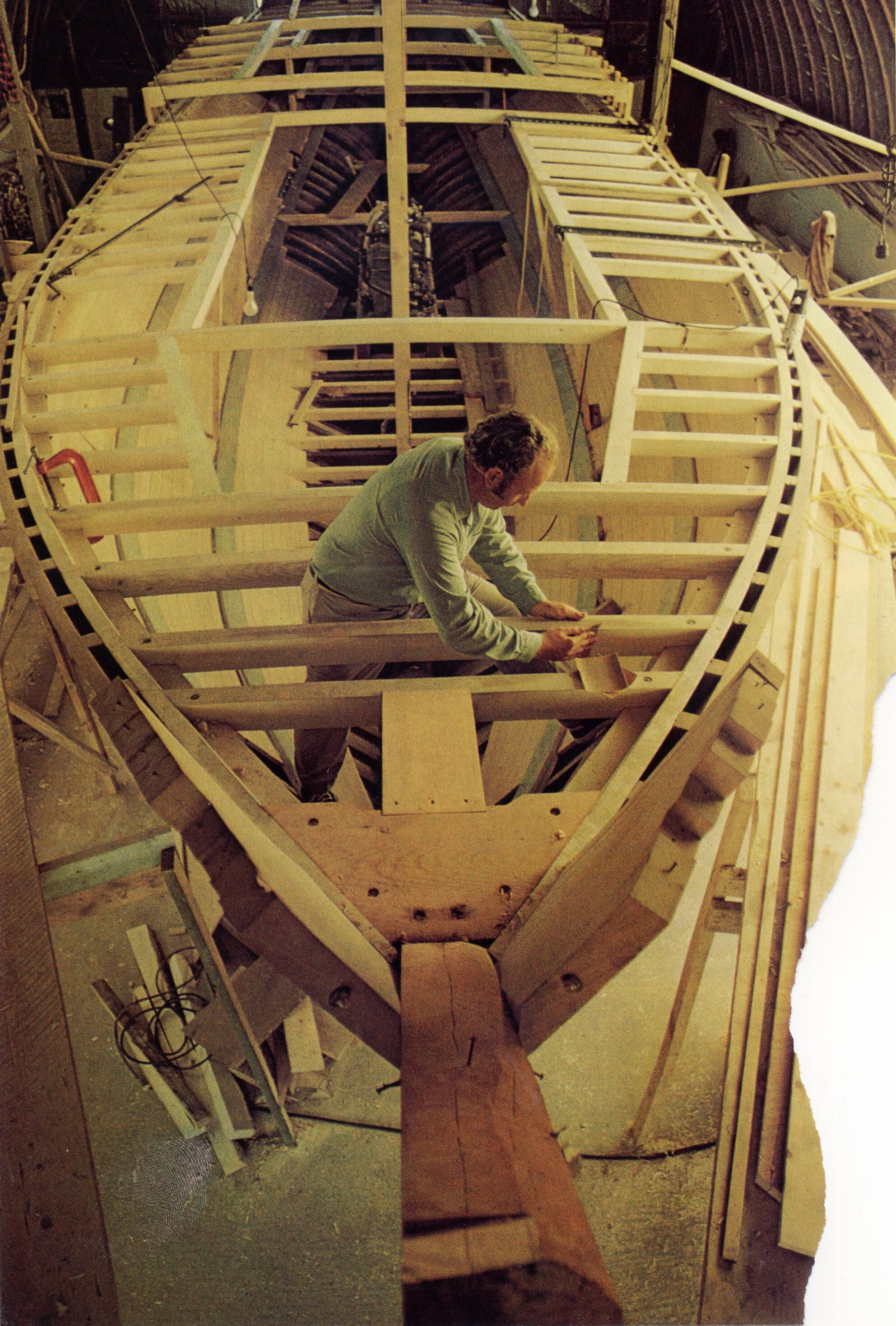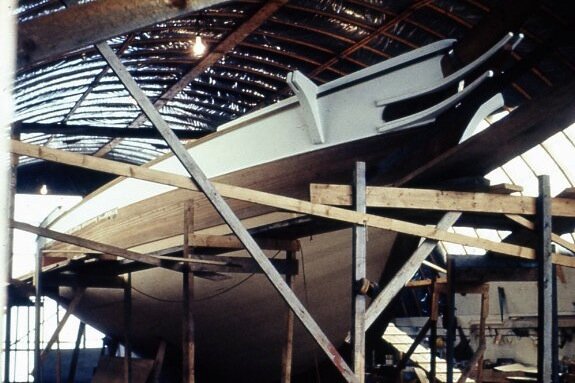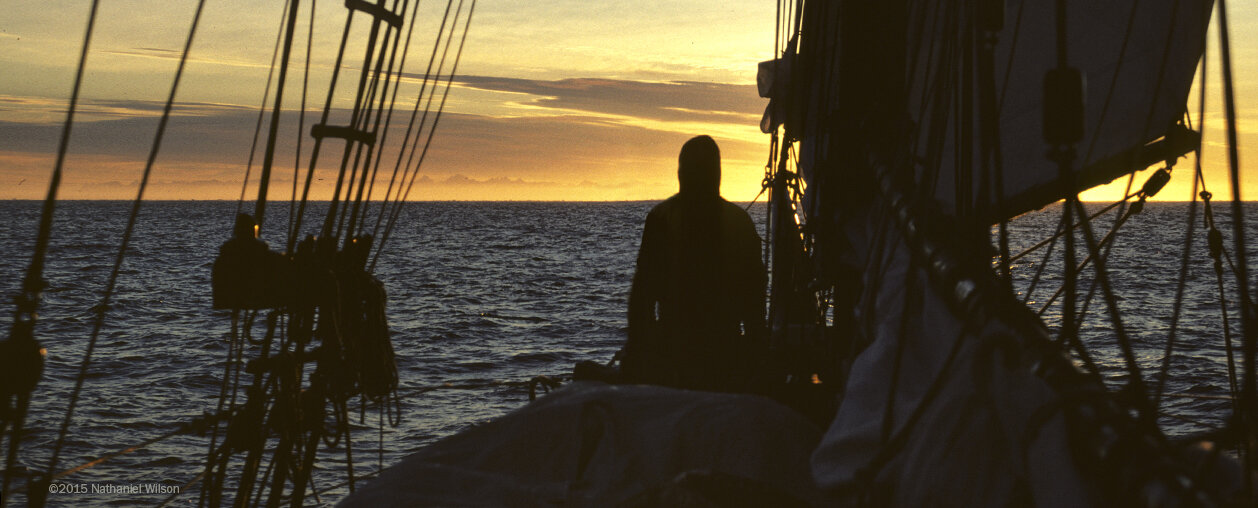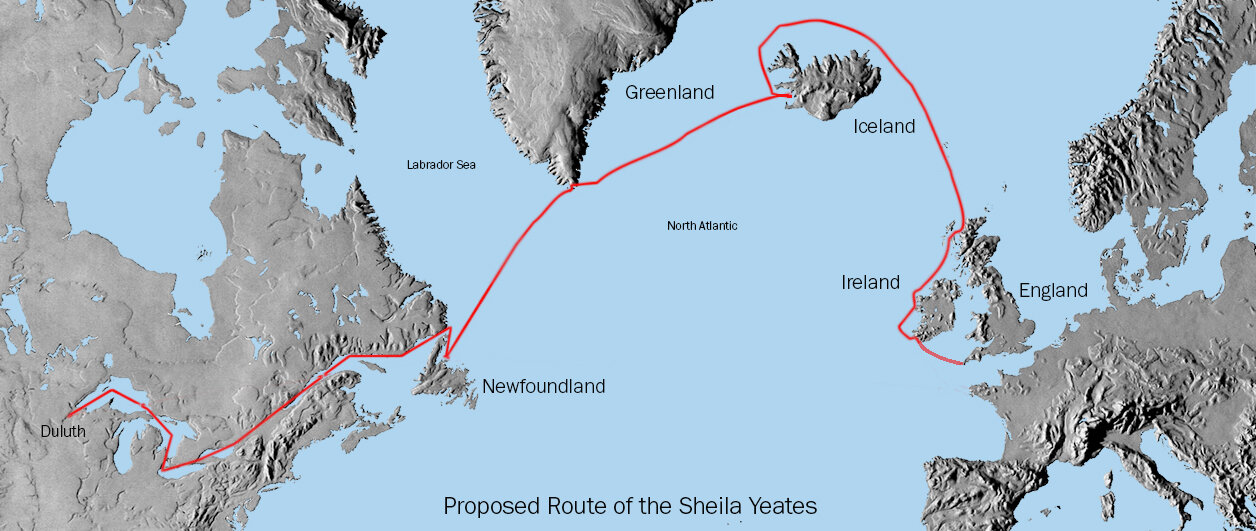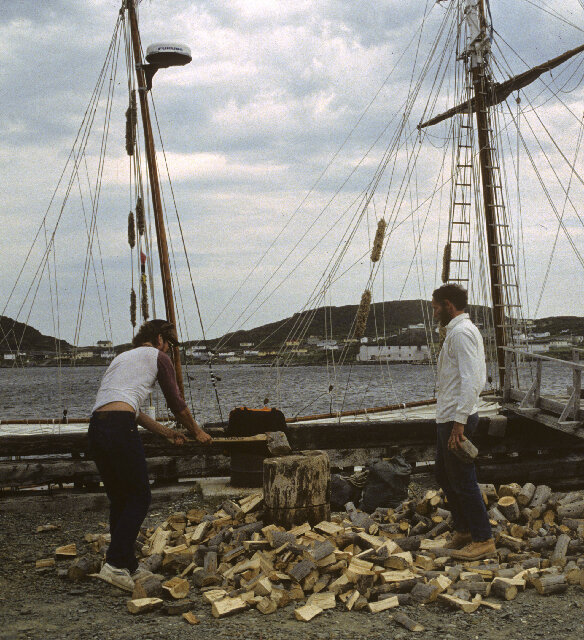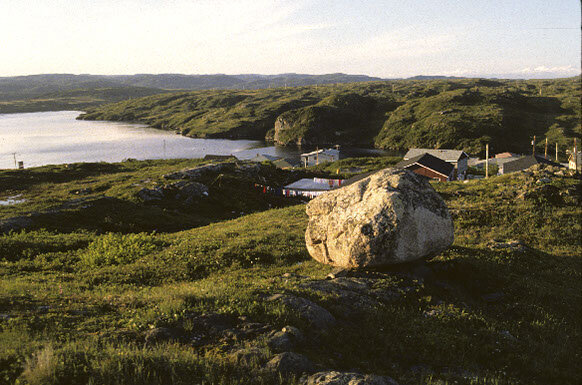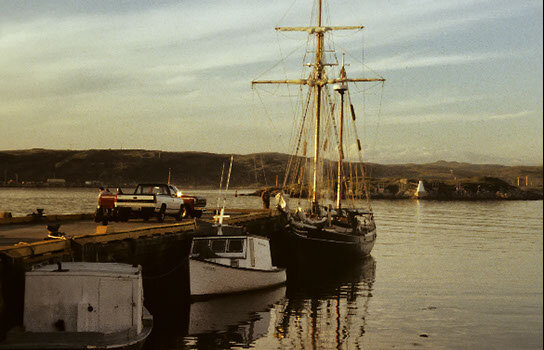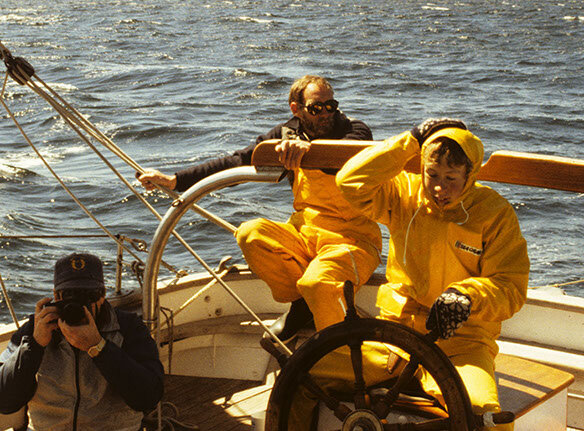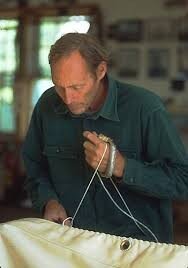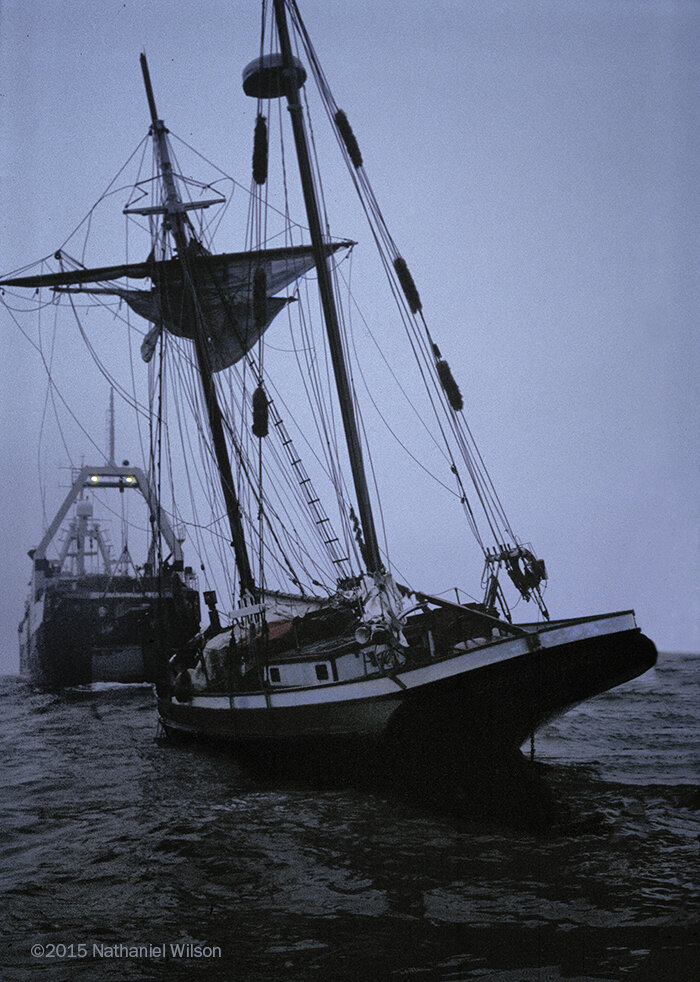By now both crews had been up for hours, with the Sheila Yeates crew having been awake for nearly 20 hours. Dazed and exhausted, Geoff and his crew finally climbed into warm, dry bunks to get some needed rest. Nat had been injured on the first day of poling through the ice and his foot and leg were swollen and blue. The crew put cold packs on his foot while he propped it up on his bunk. But all were accounted for and grateful to the Kiviuq crew for their rescue. Camaraderie was high.
Now warm, dry and fed, the crew of the Sheila Yeates could not believe their luck. Not only had they been rescued, but Captain Fancy also planned to take them to the Shetland Islands, one of their destinations and a good place to make boat repairs. In addition, the crew now had Danish beer, Danish bread and hot showers. “We were suddenly fat, dumb and happy on our way to the Shetlands,” said Geoff. Standing a watch several days later, Nat tried to express his gratitude. “I don’t know how to begin to thank you all for saving us from the ice”, he told Kiviuq’s First Mate, Cecil Bannister.” Bannister replied, “You know, one day it will be us out there.” That was all that needed to be said.
Everyone was in high spirits until the weather report predicted a front moving in with gale force winds and heavy seas. As conditions deteriorated, the seas grew. For the next two days the Sheila Yeates crew donned survival suits, and HP took them in the Kiviuq’s inflatable zodiac to check for leaks on the Sheila Yeates.
The trip was harrowing amid the building waves, and trying to jump from a violently bobbing dinghy to the side of a 50-foot ketch was a daring act of gymnastics. It was difficult enough for the younger crew and amazing that Geoff, now 76, still had the dexterity to match their moves. Much to everyone’s surprise, there was very little water inside Sheila Yeates on the first day of towing. On day two, the Sheila Yeates was riding lower in the water. This time the crew found water up to the sole of the chart room. The ignition was under water and there was no way to start the engine to pump the water. The crew worked furiously to pump her manually. The strain of being hauled through ocean swells was pulling hard on the bow of the Sheila Yeates and water was seeping in through seems that were opening between her wooden planks. On the third day the Sheila Yeates had settled dangerously low in the water. It was in desperate need of pumping, but for some unexplainable reason, the motor on the Kiviuq’s zodiac would no longer start. The crew tried everything to get it going but nothing worked. There was now no way to reach the Sheila Yeates.


